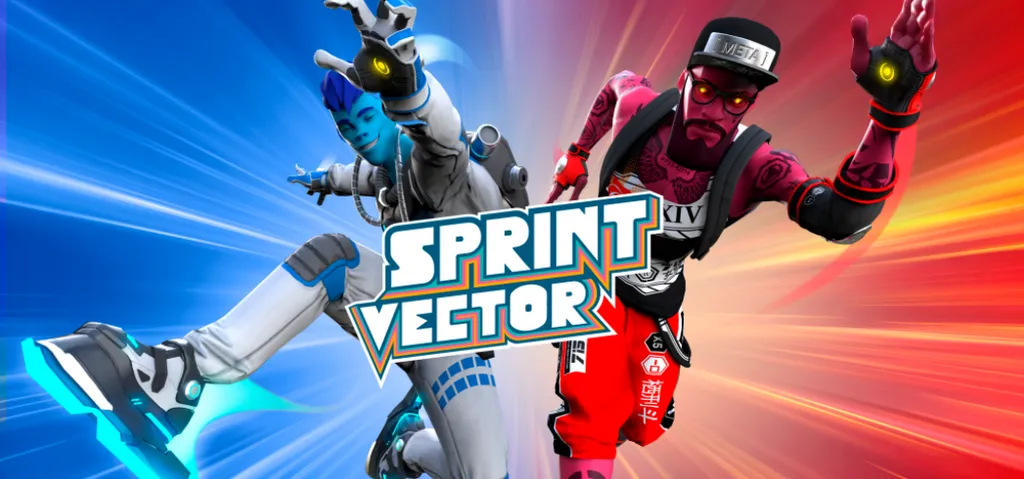What do you get if you mash the madcap, bombastic racing and whimsical worlds of Mario Kart with just a dash of the athleticism and mechanical fury of a Track & Field game? The answer may well be Sprint Vector, one of the most curious VR games on the horizon right now.
Sprint Vector is cut from the same cloth as an UploadVR favorite: To The Top. While the mechanics may be different, they’ve both got similar ambitions; to make fast, smooth locomotion within VR comfortable, accessible and, most importantly, as exciting as it should be. With its latest pre-alpha build, Raw Data developer Survios looks to be well on the way to pulling that off.
We’ve covered Sprint Vector before so I won’t spend much time on the basics; you swing your arms back and forth in a skating motion to start sprinting at a hasty pace; the faster you do this the faster you run. Jump into the air and you can glide in a Superman pose while you’ll also grab green objects to climb upwards, and drift from side-to-side with a simple button hold. The system works incredibly well; rewatching the gameplay videos I recorded for this article I was struck by just how much it looked like I was actually running. Alternating the movements of my arms rapidly felt like an evolution of the alternate button-mashing gameplay of the Track & Field series.
The game essentially makes you a highly versatile athlete, like you’re running a triathlon designed for a superhero. There’s a frantic fun to rapidly switching between play styles as you navigate a course; one moment you’ll be grinning as you overtake an opponent on foot before you’re hit with a speed-stopping assault course of climbing walls and jumps. This is a game where you’ll have to think fast in any given situation to deal with the obstacles in front of you. The switch up keeps every race feeling lively and engaging, though it will be interesting to see just how prone to memorization the finished product is.
I got to play through two tracks in my preview build and each one showed a lot of potential for repeated play, taking over two minutes to navigate. As I darted along a snowy scene, I’d pick out makeshift ramps and obstacles from the corner of my eye but, as I tried to course correct and take a shortcut, I’d tumble down into a pit of deep snow that would slow me to a crawl. Crucially, there’s an element of unpredictability to it too; moving blocks in the second level make it impossible to pull off identical laps time and again, as do player power-ups that allow you to slow opponents down or speed past them. Those are great ingredients for any party game.
Where Sprint Vector stops being that casual Mario Kart clone, though, is in its physicality. By the end of two races I was started to work up a sweat (and I wouldn’t consider myself to be out of shape). The game rewards you for putting as much effort into every race as possible with faster speeds, so it’s not like you’ll be able to take a lap or two easy if you’re feeling worn out. Personally, I’m quite excited to have another VR game that’s a well-disguised workout, though I’m not sure that goes hand-in-hand with the party atmosphere of a kart racer.
And that might be Sprint Vector’s real challenge; building up that player base. In a time when the makers of one of VR’s most prolific multiplayer games — EVE: Valkyrie — are getting out of the industry and dedicated communities struggle to reach the point of consistent, dependable matchmaking, it’s hard to judge if any new contender is up to the task. What I can tell you is that Sprint Vector certainly deserves an audience, but I’m not yet confident there’s one waiting for it.
Sprint Vector is due for release on the Oculus Rift, HTC Vive and PlayStation VR next year.
Clarification: Added that this is a pre-alpha build we tried.


























